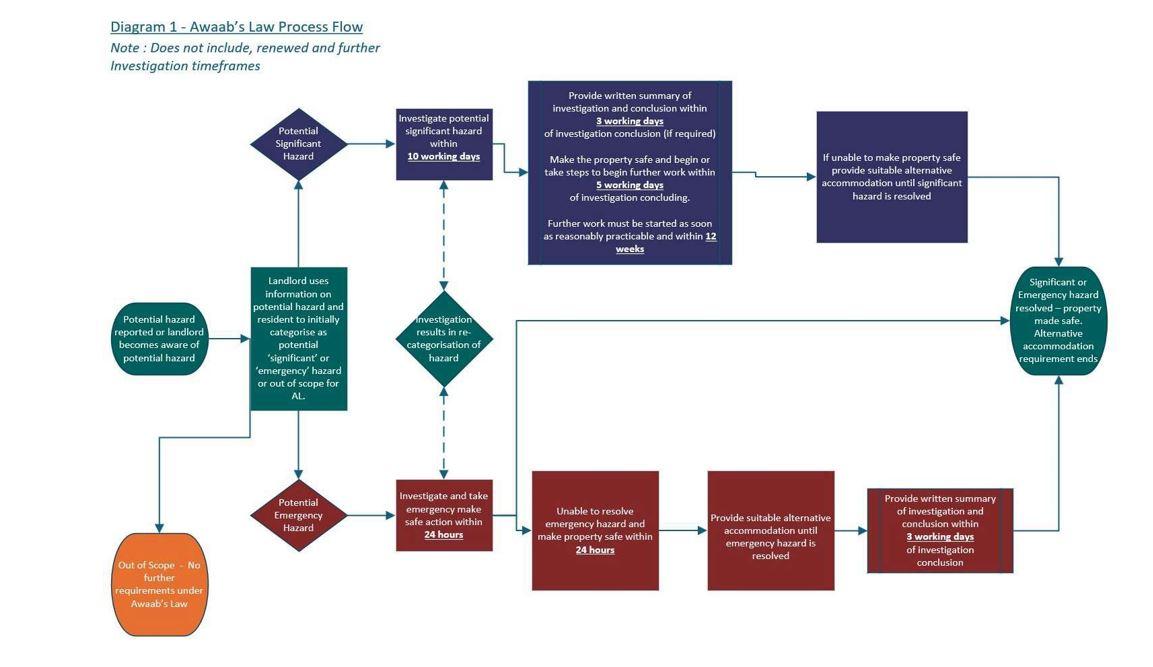Damp and Mould Policy
In this section
Appendix 1: Awaab's Law Summary
1. Hazard Identification
Damp and mould can be reported by tenants or identified by the landlord or their contractors. The landlord must assess whether the issue is:
• A significant hazard (serious risk to health/safety)
• An emergency hazard (immediate danger)
• Out of scope (not covered by Awaab's Law)
2. Categorisation
• Significant Hazard: Needs investigation within 10 working days.
• Emergency Hazard: Must be investigated within 24 hours.
• Out of Scope: No action under Awaab's Law, but may require other responses.
3. Investigation Types and Timelines
• Standard Investigation: Within 10 working days of awareness.
• Emergency Investigation: Within 24 hours if immediate danger.
• Renewed Investigation: Requested by tenant if initial check was not in-person and no work has started.
• Further Investigation: If the cause or extent of hazard is unclear, must be done as soon as possible.
4. Required Actions
If a significant hazard is confirmed:
• Provide written summary to tenant within 3 working days after the investigation been concluded.
• Start safety work within 5 working days.
• Begin any additional work within 12 weeks if not possible earlier.
Written summary must include findings, required actions, timeframes, and contact information.
5. Alternative Accommodation
If the home cannot be made safe quickly, the landlord must offer suitable temporary accommodation until the hazard is resolved.
6. Resolution
Once all safety work is completed and the hazard is resolved, the legal duty under Awaab's Law ends.
Diagram 1 - Awaab's Law Process Flow

